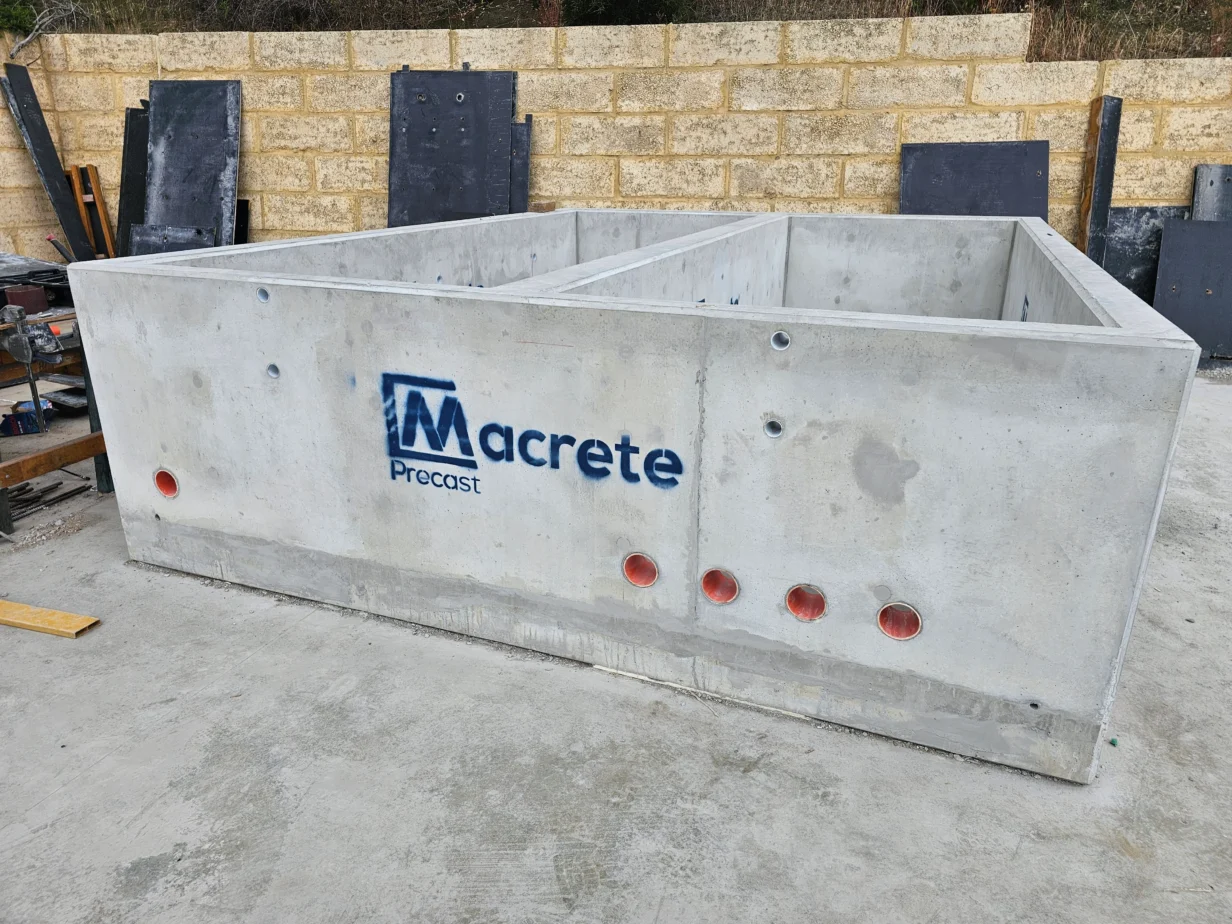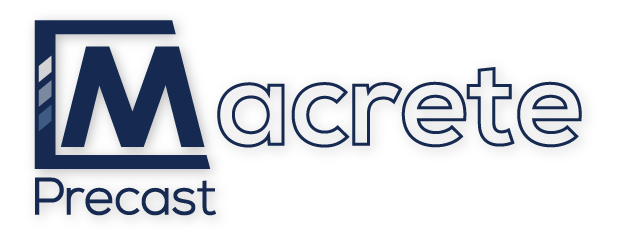
What Is Precast Cement & Why It’s Used in Construction
Key Takeaways
- Precast cement is manufactured in a controlled factory environment and then transported to site for installation.
- It offers significant time and cost savings compared to traditional cast-in-situ methods.
- Benefits include faster installation, durability, sustainability, and design flexibility.
Modern construction demands materials that are efficient, durable, and sustainable. Among the innovations shaping the industry, precast cement has emerged as a leading choice for contractors, architects, and project managers. By shifting key processes away from the construction site and into a controlled manufacturing environment, precast cement is revolutionising the way projects are designed and delivered.
In this article, we explain what precast cement is, why it is used, and the advantages it offers over traditional construction methods. We also highlight why Macrete Precast is the trusted partner for innovative precast solutions.
What Is Precast Cement?
Precast cement (often referred to as precast concrete) is a construction material that is manufactured in a factory-controlled environment before being transported to the construction site. Unlike cast-in-situ concrete, which is poured and cured directly on site, precast components are produced off-site to exact specifications.
This process ensures:
- Consistent quality and durability, unaffected by weather conditions.
- Precise dimensions, allowing for easier installation.
- Streamlined site operations, since much of the work is completed before delivery.
- In simple terms, precast cement brings the benefits of industrial-scale precision into the world of construction.
Why Is Precast Cement Used in Construction?
The growing use of precast cement is driven by the need for faster, safer, and more cost-effective building methods. Its advantages extend across every stage of a project.
Efficiency and Reduced Construction Time
Because precast elements are delivered ready to install, projects can progress at a significantly faster pace. On-site labour requirements are reduced, and construction schedules are shortened.
High Durability and Quality Control
Factory conditions ensure controlled curing, uniform strength, and reduced risk of defects compared to on-site pouring. This translates into longer-lasting structures.
Cost-Effectiveness
Although the upfront cost may be similar to or slightly higher than cast-in-situ concrete, long-term savings are substantial due to reduced construction time, minimal site disruption, and lower maintenance needs.
Sustainability Benefits
Precast cement promotes resource efficiency and waste reduction. Reusable moulds and optimised production techniques minimise material wastage, while the controlled environment helps reduce energy use.
Advantages of Precast Cement
Choosing precast cement offers several practical benefits:
- Faster installation – Precast components are delivered ready to fit, cutting down construction schedules.
- Reduced site disruption – Less noise, dust, and heavy labour are required on site.
- Greater design flexibility – Custom moulds allow for unique architectural designs and finishes.
- Consistent quality and strength – Factory production ensures high standards across every piece.
Common Applications of Precast Cement
Precast cement is versatile, making it suitable for a wide range of projects:
- Bridges, tunnels, culverts, headwalls.
- Office complexes, shopping centres, car parks.
- Modular housing units, walls, staircases.
- Warehouses, factories, utility plants.
Its adaptability means precast cement can be found in both functional infrastructure and architectural design projects.
Why Choose Macrete Precast?
With decades of expertise, Macrete Precast is a trusted partner in delivering innovative precast solutions. From infrastructure to commercial builds, Macrete has a strong track record in large-scale and complex projects. Every project is different. Macrete offers bespoke precast designs to meet specific structural and architectural needs.
By combining advanced technology with rigorous quality control, Macrete ensures durability, efficiency, and sustainability in every product. For contractors, architects, and developers, partnering with Macrete means choosing reliability and innovation in precast construction.
Final Note
Precast cement is reshaping modern construction with its efficiency, durability, and flexibility. By manufacturing components off-site, it reduces time, costs, and environmental impact while delivering consistently high standards.
As an industry leader, Macrete Precast is the ideal partner for projects seeking cutting-edge, sustainable solutions. Whether you are a contractor, architect, or project manager, precast cement offers a smarter way forward, and Macrete is here to help make it a reality.
FAQs
What is the difference between precast cement and precast concrete?
The terms are often used interchangeably. Precast concrete is the technical term, while precast cement is commonly used in industry discussions. Both refer to factory-produced concrete elements cured before installation.
Is precast cement more cost-effective than traditional construction methods?
Yes. While the initial investment may be comparable, precast offers significant long-term savings by reducing construction time, labour costs, and maintenance needs.
How durable is precast cement compared to cast-in-situ concrete?
Precast cement is typically more durable because it is produced in controlled conditions, ensuring consistent curing, strength, and resistance to environmental factors.
What types of projects benefit most from precast construction?
Precast is especially valuable for infrastructure, commercial, industrial, and modular housing projects that demand speed, precision, and long-term performance.
Can precast cement be customised for unique architectural designs?
Yes. Precast can be produced in custom moulds to achieve distinctive architectural finishes, complex geometries, and tailored structural solutions.


No Comments